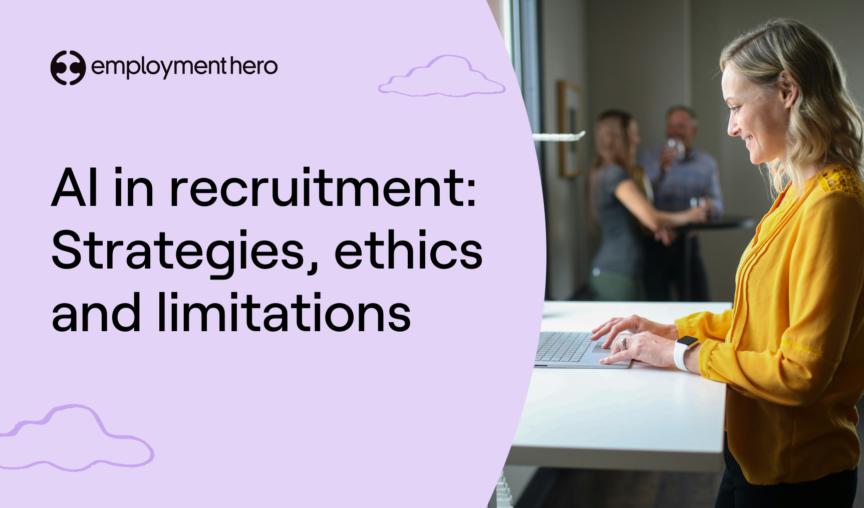A group of 82 customers, partners, and experts recently gathered in Toronto to discuss some common challenges impacting today’s organisations – growing complexity, accelerating interest in AI, and innovating in the face of uncertainty. As Ted Mallett, Director Economic Forecasting and Trends and Conference Board of Canada put it, “Everyone is faced with the same challenges. Success comes to those who manage it best.”
Ceridian Chair and CEO David Ossip kicked off the presentations with a warm welcome and goal for the event. He spoke about the importance of creating a network of customers, partners, and experts to work together and help each other. Attendees were welcomed to network between presentations and make new connections in the greater Ontario community.
Here are a few of the key takeaways from the discussion:
Predicting the future
We know organisations need forward-looking policies, proactiveness, and the ability to pivot to be successful in today’s unpredictable reality. But Mallet points out most of the future is predictable – the question is not if, but when. Post-pandemic trends are an acceleration of existing trends we were already seeing, rather than a new direction. Remote and hybrid work, the focus on wellbeing, and polarisation continue to be on the rise.
In his presentation, Mallett quoted Canadian futurist Karl Schroeder who said “Foresight is not about predicting the future, it’s about preventing surprises.” HR leaders need to be ready to take on change as demographics shift and technologies accelerate. Workforces are changing with different age groups, more immigration flow, work site preferences, and new skills to match innovation.
Ajay Agrawal, Professor, Geoffrey Taber Chair in Entrepreneurship and Innovation at University of Toronto, Rotman School of Management said tech is advancing so quickly that many companies don’t have a plan. “We’re on ChatGPT4. When planning your organisational strategy, are HR leaders ready for 5,6, and 7?” More than ever, organisations need to think a few years ahead to have the right strategies, skills, and systems for the future.
Leveraging AI right now
HR leaders know AI has already changed how we work in a variety of ways, through generative AI, automation, and enhanced personalisation and productivity.
Agrawal spoke on this accelerating rate of change and the bigger picture organisations should consider when deciding between a point solution and a system solution. Is your organisation’s long-term vision to solve one problem with AI or are you impacting a whole system?
At its core, machine intelligence is using information you already have to generate predicted information that you don’t. Agrawal spoke on how foundational prediction is and said, “Every company in every market is at risk for disruption because each has been optimised for a pre-prediction world.” Leaders need to shed old ways of working and re-examine how changing the ways we work could have ripple effects.
For example, the performance management process can be time-consuming to collect individual key performance indicators and progress towards goals. If managers and employees could leverage AI to generate drafts of performance improvement plans or annual reviews, this could lead to more thoughtful, thorough reviews in less time.
Mallett expanded on the topic of AI as he spoke the potential value of intelligent technologies to augment human workers. “Will AI replace my job? AI is a tremendous help to people who already know what they’re doing.” It’s clear that the future of AI and HR will be people working in tandem with technology to drive more productivity and personalisation.
Planning for today and tomorrow
Planning for the future can be daunting unless your company values and focus are clear. Transforming HR to support the future of work begins with taking a closer look at the inflection point between modern technology and the employee experience.
For Empire Company Limited and Sobeys, their mentality is a journey to transformation. Julia Knox, Chief Technology and Analytics Officer, and Sandra Pasquini, SVP HR Operations, joined Holly Tiessen, Ceridian’s SVP Customer Success on stage to explore how they’re planning for the future of their workforce. “We looked further ahead. What are we trying to do? We are making an investment to support core foundational values, unlock more value, and transform how we work.”
Recognising that people and technology are highly interconnected is key to tapping into the potential of the boundless workforce. Knox and Pasquini see their workforce dynamics rapidly changing and partnered with Dayforce to navigating this intricate balancing act.
“For us, it was all about the partnership. We want a partner that can lead us there – we can’t innovate on our own. We can’t be on every team call. We’re building for today to gain value, but it’s also about partners who continue to innovate so we can meet the needs of our workforce for the future.”
Ceridian’s Chief Operating Officer, Chris Armstrong brought the future of work discussion back down to earth. He spoke about how working toward simplicity at scale in a complex world creates a meaningful experience for employees. For HR leaders, operations like payroll and workforce management have complex, sophisticated requirements that are critical to driving your business. Osbourne said “When you’re looking at business improvement, I keep it simple and come back to the three-legged stool: People, process, and technology.”
When facing emerging trends like AI and the explosion of different types of work and workers, leaders need to view their transformation efforts on a system-wide level to turn disruption into opportunity.
This post was written by Ceridian. You can see their listing in the Software Suppliers area of the website.






